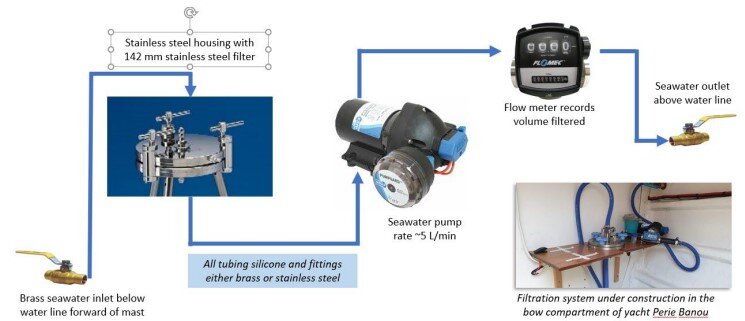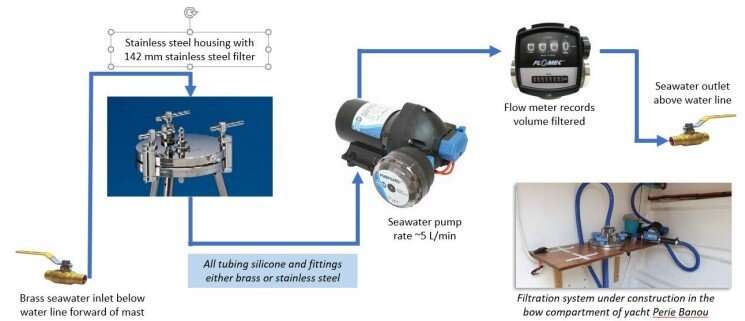

Curtin scientists who analyzed seawater samples taken by Jon Sanders on his recent circumnavigation voyage have found microplastics present in the vast majority of samples, including those from very remote areas of the world’s oceans.
Researchers from Curtin’s WA-Organic and Isotope Geochemistry Centre (WA-OIGC) have shared the full results of the analysis of seawater samples, collected at 177 locations across the 46,100km voyage, including areas of the Southern Hemisphere not previously tested for microplastics.
Lead researcher and John Curtin Distinguished Professor Kliti Grice said the analysis provided the first accurate measure of the presence of microplastics in unique ocean environments, the source of which may include vehicle tire dust, pellet spills, textiles, building debris, cosmetics, and packaging materials.
“The aim of the study was to target areas of the world’s oceans not previously sampled for microplastics and to produce a complete global snapshot of microplastic distribution,” Professor Grice said.
“Our analysis found microplastics were present in the vast majority of the waters sampled by Jon, even in very remote ocean areas of the Southern Hemisphere.
“The vast majority of the seawater filters used by Jon were found to contain microplastics however some areas of ocean, particularly the Pacific, had several consecutive sampling locations not near any major islands where no microplastics were observed.
“Microplastics were found all along the eastern and southern seaboards of Australia including the Southern Ocean in the Great Australian Bight.
“While there were no ‘hot spots’ of contamination, two sampling stations, approximately 600km off the coast of Brazil, recorded relatively high numbers of microplastics at about 250 particles per cubic meter of seawater.”
Co-researcher Dr. Alan Scarlett, also from WA-OIGC, said although the analysis found several types of microplastic such as polycarbonate, polyethylene, polypropylene and synthetic rubber, which are used in products such as drink bottles, packaging and tires, no particular type of plastic dominated.
“The size of particles observed was typically close to the lower size limit defined as a microplastic and were mostly gray/black in color,” Dr. Scarlett said.
“Many fibers collected were too small for us to properly analyze and therefore the numbers reported are likely to be an underestimate of the actual number of microplastics present in the oceans.
“On average, water sampled during the voyage contained 33 particles per cubic meter of seawater, which is consistent with other studies of remote areas of ocean.
“Disturbingly, other studies also suggest there are far greater numbers of microplastics present at a greater depth than sampled during our study.
“This research gathers further vital information about the presence and impact of plastic pollution on the world’s oceans, which may help in the preservation of the ocean and marine environment.”
European floating microplastics may accumulate in Arctic Ocean
Around the plastic world in 455 days—a citizen science global transect quantifying microplastics in the oceans, espace.curtin.edu.au/handle/20.500.11937/88402
Curtin University
Citation:
The world’s most remote oceans are polluted with microplastics (2022, May 26)
retrieved 26 May 2022
from https://phys.org/news/2022-05-world-remote-oceans-polluted-microplastics.html
This document is subject to copyright. Apart from any fair dealing for the purpose of private study or research, no
part may be reproduced without the written permission. The content is provided for information purposes only.